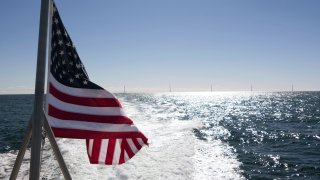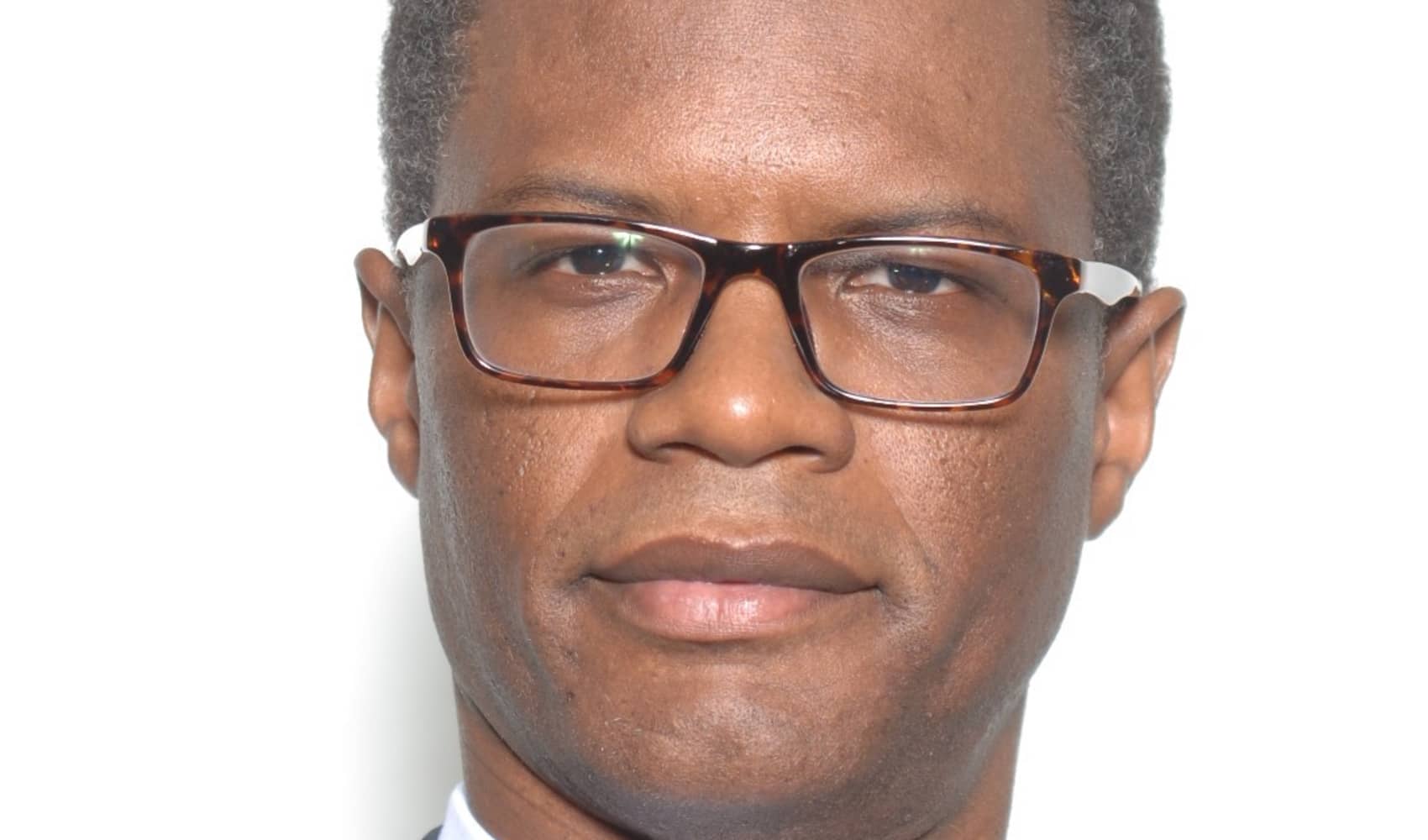
- The U.S. wants to expand its offshore wind capacity to 30 gigawatts by 2030, a move the Biden administration hopes will generate jobs and investments.
- America's fledgling offshore wind industry trails other parts of the world.
- The country's first offshore wind facility, the 30 megawatt Block Island Wind Farm, began commercial operations in late 2016.
The U.S. wants to expand its offshore wind capacity to 30 gigawatts by 2030, a move the Biden administration hopes will generate thousands of jobs and unlock billions of dollars in investment in coming years.
The target, announced by the Departments of Energy, Interior and Commerce on Monday, represents a significant ramp-up of America's fledgling offshore wind industry, which trails other parts of the world.
The United States' first offshore wind facility, the 30 megawatt Block Island Wind Farm, began commercial operations in late 2016. By contrast, the world's first offshore wind farm, in waters off Denmark, was opened in 1991. Today, figures from industry body WindEurope put offshore wind capacity in Europe at around 25 GW. This compares to just 42 MW of capacity in the U.S.
Get DFW local news, weather forecasts and entertainment stories to your inbox. Sign up for NBC DFW newsletters.
The White House said meeting its new goal for offshore wind would trigger in excess of $12 billion a year in capital investment. It said it would lead to more than 44,000 jobs in the offshore wind sector by 2030, and support 33,000 other roles connected to the industry.
According to the Department of Energy, deploying 30 GW of offshore wind by the end of the decade would produce enough electricity to power more than 10 million homes in the U.S.
Gregory Wetstone, president and CEO of the American Council on Renewable Energy, said his organization was "thrilled to see the White House stepping up with concrete measures to help unleash America's nascent offshore wind industry."
"Offshore wind is a potentially massive emerging sector in the U.S. that can drive billions of dollars in economic investment, create tens of thousands of good-paying American jobs, and provide abundant pollution-free power," Wetstone said in a statement.
Money Report
Kit Kennedy, senior director in the Climate and Clean Energy program at the Natural Resources Defense Council, described offshore wind as being "uniquely positioned to address our country's greatest challenges — the intersecting environmental, public health and economic crises that exacerbate racial and social injustices and threaten the planet."
"We look forward to working with the Biden administration to ensure that in addition to creating a bevy of jobs from manufacturing to port facilities, offshore wind power development also protects the climate and coastal and marine ecosystems, and advances social equity and environmental justice," Kennedy added.
Monday also saw the Bureau of Ocean Energy Management announce plans for an environmental review of the Ocean Wind offshore wind farm planned for waters off New Jersey.
According to Danish energy firm Orsted, which is working on the 1.1 GW project with support from New Jersey's Public Service Enterprise Group, the facility will be able to power over 500,000 homes if it goes ahead.
The bureau's decision, according to the White House, puts Ocean Wind "in line to become America's third commercial scale offshore wind project." Looking ahead, environmental reviews for as many as 10 other projects could be initiated this year, the White House said.






